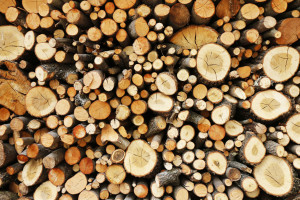Chromated Copper Arsenate (CCA) Related Issues Case Study
 The CCA plant was originally built and operated by the South Australian government to stimulate the timber industry. It was located over cavernous limestone, and approximately 1 kilometer upgradient of Blue Lake, a tourist feature and the water supply source of 25,000 people. During initial plant operation by the state, hexavalent chromium percolated from the surface through vertical solution features into the water table, at a depth of 16 meters, and began to move toward the lake. The state then sold the property to a company active in the timber industry, with the requirement that the contamination be characterized and cleaned up.
The CCA plant was originally built and operated by the South Australian government to stimulate the timber industry. It was located over cavernous limestone, and approximately 1 kilometer upgradient of Blue Lake, a tourist feature and the water supply source of 25,000 people. During initial plant operation by the state, hexavalent chromium percolated from the surface through vertical solution features into the water table, at a depth of 16 meters, and began to move toward the lake. The state then sold the property to a company active in the timber industry, with the requirement that the contamination be characterized and cleaned up.
The original consultant proposed a ‘pump and treat’ remedial approach, which was estimated to require from 35 to 350 years at a cost of 5 to 50 million Australian dollars. The timber company then contacted Jim Rouse, who proposed an in-situ approach, the first of its kind in Australia, with a time and cost estimate of two years and Aust. $2,000,000. The company abandoned the old plant and built a new plant at a new location, which enabled the construction of an infiltration basin to allow chemical reductant to be infiltrated through the silt-filled vertical solution features that had served as the original route the contaminant took to reach the ground water. Ground water was pumped from the plume, treated, and used as the carrier to transport the reductant solution down into the ground water.
After approximately 2 years (and a cost of approximately Aust. $2,000,000), the state of South Australia issued a ‘Monitored Natural Attenuation’ agreement to the company (again the first to be obtained in Australia), and subsequent monitoring has produced evidence that there is no significant
Chromated Copper Arsenate, CCA plant, South Australia, hexavalent chromium, in-situ, contamination during ten years of evaluation.
